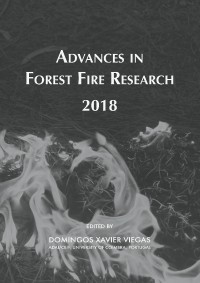Please use this identifier to cite or link to this item:
https://hdl.handle.net/10316.2/44677| DC Field | Value | Language |
|---|---|---|
| dc.contributor.author | Finney, Mark A. | |
| dc.contributor.author | Pearce, Grant | |
| dc.contributor.author | Strand, Tara | |
| dc.contributor.author | Katurji, Marwan | |
| dc.contributor.author | Clements, Craig | |
| dc.date.accessioned | 2018-11-11T13:14:44Z | |
| dc.date.accessioned | 2020-09-06T17:30:56Z | - |
| dc.date.available | 2018-11-11T13:14:44Z | |
| dc.date.available | 2020-09-06T17:30:56Z | - |
| dc.date.issued | 2018 | - |
| dc.identifier.isbn | 978-989-26-16-506 (PDF) | |
| dc.identifier.uri | https://hdl.handle.net/10316.2/44677 | - |
| dc.description.abstract | The physics of bushfires has traditionally been studied through intensive modelling that requires numerous assumptions of combustion and heat transfer adapted from established structure-fire engineering relations. Renewed emphasis in experimental research has caused rethinking of some of the most basic concepts in wildland fuel particle ignition and flame spread. These findings suggest new possibilities for advancing bushfire behaviour science. Laboratory and field experiments conducted by the U.S. Forest Service’s Missoula Fire Sciences Lab reveal the source of convective heating in spreading fires derives from fire-induced vorticity which forces flames downward and ahead of the combustion zone in intermittent contact with fuel particles. New laboratory techniques capture the intermittency and suggest it has predictable average frequencies familiar in studies of buoyant instabilities. Dependent only on buoyancy, these scaling relations have shown promise at field scales. A project being led by Scion’s Rural Fire Research Group in New Zealand aims to test this hypothesis that heat-driven buoyancy (convection) creates a series of peaks and troughs in the flame front that drive fire spread and scale with flame size and wind speed. The theory is being tested through a series of heavily-instrumented fire experiments at sites in a range of fuel types, starting in uniform crop stubble fuels (February 2018), moving to more complex scrub fuels (2018/19) and then to wilding pine forest fuels (2019/20). | eng |
| dc.language.iso | eng | - |
| dc.publisher | Imprensa da Universidade de Coimbra | por |
| dc.relation.ispartof | http://hdl.handle.net/10316.2/44517 | por |
| dc.rights | open access | - |
| dc.subject | Convective Heat Transfer | eng |
| dc.subject | Prescribed Fire | eng |
| dc.subject | Remote Sensing | eng |
| dc.title | New Zealand prescribed fire experiments to test convective heat transfer in wildland fires | por |
| dc.type | bookPart | por |
| uc.publication.firstPage | 1288 | - |
| uc.publication.lastPage | 1292 | - |
| uc.publication.location | Coimbra | por |
| dc.identifier.doi | 10.14195/978-989-26-16-506_160 | - |
| uc.publication.section | Chapter 7 - Short Contributions | por |
| uc.publication.digCollection | PB | por |
| uc.publication.orderno | 160 | - |
| uc.publication.area | Ciências da Engenharia e Tecnologias | por |
| uc.publication.bookTitle | Advances in forest fire research 2018 | - |
| uc.publication.manifest | https://dl.uc.pt/json/iiif/10316.2/44677/203859/manifest?manifest=/json/iiif/10316.2/44677/203859/manifest | - |
| uc.publication.thumbnail | https://dl.uc.pt/retrieve/11056221 | - |
| uc.publication.parentItemId | 55072 | - |
| uc.itemId | 68759 | - |
| item.fulltext | With Fulltext | - |
| item.grantfulltext | open | - |
| Appears in Collections: | Advances in forest fire research 2018 | |
Files in This Item:
| File | Description | Size | Format | |
|---|---|---|---|---|
| new_zealand_prescribed_fire_experiments.pdf | 1.1 MB | Adobe PDF |  |
Items in DSpace are protected by copyright, with all rights reserved, unless otherwise indicated.
